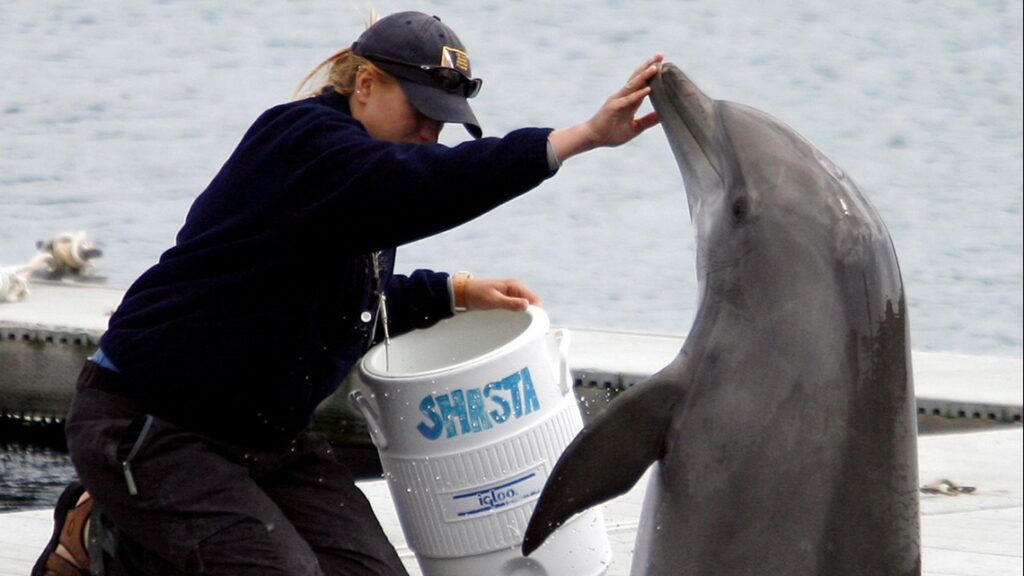The Cold War propelled the advancement of military technology due to the scare of another world war. Among the improvements was a unique approach on how animals could be helpful in military needs. Did you ever wonder what animal protects the nation’s nuclear armament?
Military dolphins have been protecting about 25% of the United States’ nuclear arsenal. These dolphins have been trained to safeguard the stockpile since 2010 by using their biological sonar to detect hazards under the sea.
The History of Navy Dolphins
The usage of sea mammals first started with the launch of the Marine Mammal Program in 1960. Its initial goal was to develop more efficient methods of detecting underwater hazards by studying the advanced biological sonar of dolphins. The program also wanted to learn from these mammals to build better boats and submarines.
The Navy then trained dolphins, beluga whales, sea lions, and other marine mammals to perform underwater tasks like delivering equipment to divers underwater, locating and retrieving lost objects, guarding boats and submarines, and doing surveillance work underwater with a camera mounted on their heads.
Five years later, the first bottlenosed dolphin named Tuffy could complete an open ocean military exercise. Tuffy delivered mail and tools to navy personnel in Sea Lab II, which was located 200 feet underwater. Tuffy was also trained to guide lost divers to safety.
During the Vietnam War, dolphins were deployed to Cam Ranh Bay to perform underwater surveillance and guard navy boats against enemy swimmers. The Navy allegedly taught these dolphins to attack and kill enemy swimmers, but this rumor was denied. At the same time, the program expanded, collecting more dolphins intended to be trained for surveillance purposes.
The Navy deployed six dolphins to the Persian Gulf during the late eighties. The dolphins patrolled the harbor in Bahrain to safeguard US ships and escorted Kuwaiti oil tankers to avoid underwater mines. In the early nineties, dolphins were supposed to be protecting the Bangor Washington Trident Missile Base. But the plan was dropped after animal activists filed suit against the Navy under the National Environmental Protection Act.
The program was declassified and retired after the Cold War. Only one training center was maintained, and around 30 dolphins were released from active duty. (Source: PBS)
Guarding Bangor, Washington
The plan for militarized dolphins to safeguard Bangor, Washington, was resurrected and put into action in 2010. According to Navy spokesperson Chris Haley, the dolphins have been protecting the base’s seaward side, and it is critical that they do so since Bangor holds about 25% of 9,962 nuclear warheads owned by the nation. (Source: Military)
About 20 dolphins, as well as California sea lions, patrol the shores around the submarine base. It was part of the enhanced security measure of the Navy in response to the September 11, 2001, terrorist attacks.
The dolphins are accompanied by their human handlers when they patrol the shoreline. Handlers use powerboats with attached sensors. These sensors are used when dolphins detect an intruder, alerting their handlers. The handlers will then assess if further investigation is needed, and if deemed necessary, they will attach a strobe light or a noisemaker on the dolphin’s nose. The dolphin would then swim and bump into the intruder, dropping the light or noisemaker to mark the location for its handler to locate. (Source: Scientific American)
